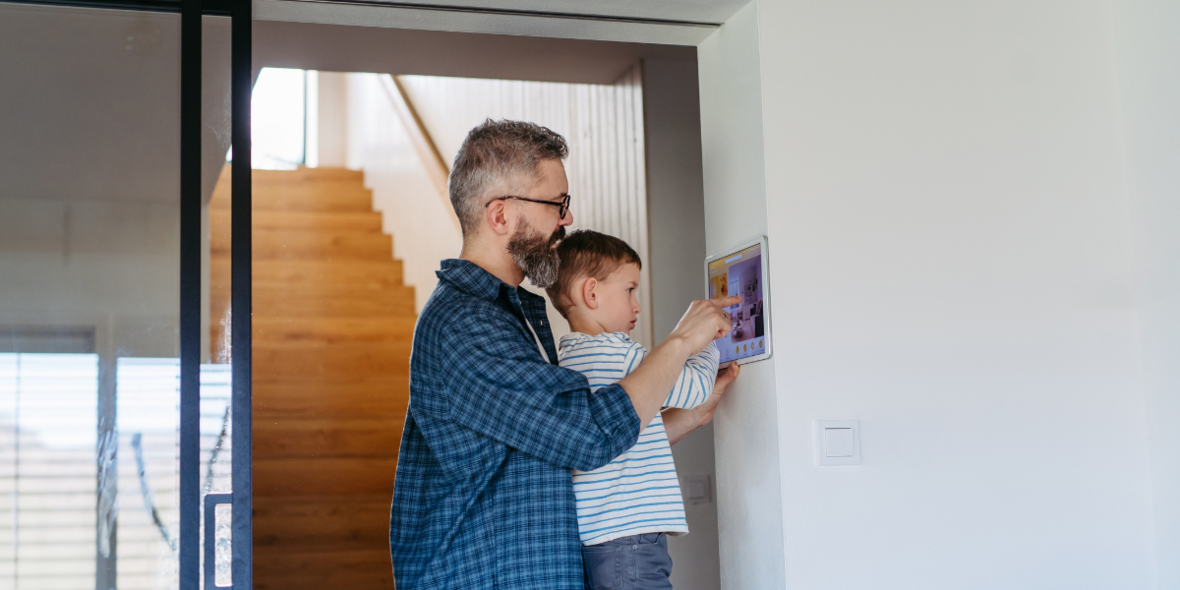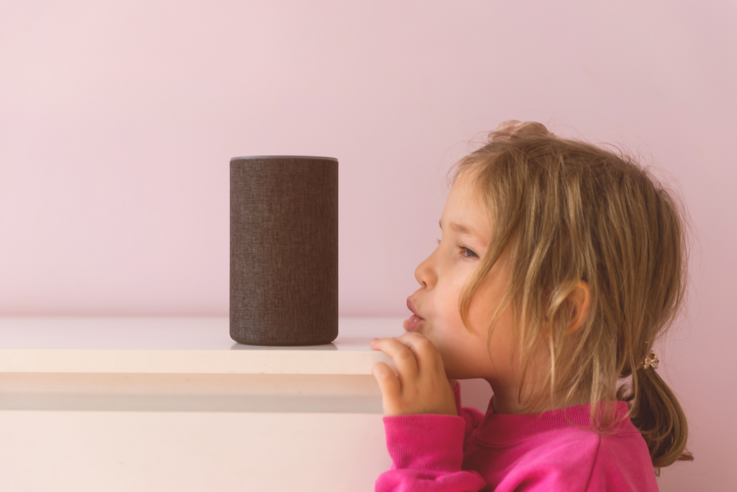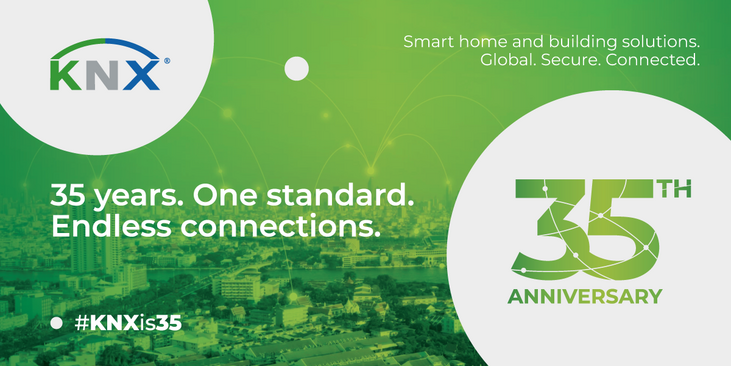31. Jul 2025
Can smart homes work without Wi-Fi? KNX shows how

When people think of smart homes, they usually imagine 24/7 Wi-Fi-connected devices and cloud-based apps. But here’s the truth: a truly reliable and secure smart home system doesn’t have to depend on Wi-Fi at all. With KNX home automation, you can build a smart home that’s still fully connected, automated, and efficient — all without a Wi-Fi connection.
In this article, we’ll explain how KNX offers a local smart home control solution that works even when your internet connection doesn’t.
The common misconception: Why do most people think smart homes need the Internet?
Most homeowners associate smart homes with Wi-Fi gadgets: smart speakers, cloud-connected light bulbs or smartphone apps that allow you to remotely check in on your home. As these smart devices and smart features have become very popular, they’ve also made Wi-Fi the default connection method for many entry-level smart homes. Why? It’s easy. Nowadays everyone knows how they can connect with the Internet.
But while convenient, Wi-Fi-dependent systems come with trade-offs:

Unreliable automation: If your Wi-Fi fails, so does your home automation.
Security risks: Cloud services collect data, creating privacy risks or exposure to hacking.
Product lock-in: Many Wi-Fi-based systems are proprietary, meaning you’re stuck with one brand. If the brand calls quits or their support for a product line ends, your devices may stop working.
- Limited integration and device incompatibility: Standalone Wi-Fi devices often don’t communicate well with each other, leading to a scattered smart home experience.
This is why more homeowners are looking for offline smart home solutions that work independently of Wi-Fi, like wired solutions. KNX offers exactly that.
How KNX works: Home automation without Wi-Fi
3 communication methods for smart homes without a Wi-Fi connection
KNX is a global standard for smart home and building automation, designed for flexibility, security and reliability. Unlike Wi-Fi-based devices that depend on cloud servers, KNX offers three ways to let your devices communicate with each other:
Twisted Pair Wiring (KNX TP): Wired control for ultimate stability.
KNX RF (Radio Frequency): Secure wireless communication for retrofits, renovations or smaller living spaces. Learn more about the advantages of KNX RF
KNX IP (Ethernet): For easy integration into modern network environments, but still fully local.
All devices communicate directly over the KNX protocol, creating a local smart home network. The system controls everything from lighting and shading and HVAC (heating, ventilation, and air conditioning) to your home security and energy management. And the best part? It works even if your Wi-Fi goes down. Your KNX system continues to function because it doesn’t rely on cloud processing.
Does KNX still support Wi-Fi smart devices?

Yes. KNX supports both wired and wireless smart devices, including Wi-Fi-based products.
While KNX is designed to work without constant internet access, it also allows you to connect Wi-Fi smart devices through secure interfaces and gateways.
This means you can integrate products like smart speakers or remote access via a mobile app into your KNX system without losing control or compromising security.
With KNX, you decide how much of your home is online, offline or a mix of both, giving you maximum flexibility and future-proof control.
The key advantages of a KNX offline smart home system

Increased reliability
Wi-Fi outages are common, but with KNX your home automation keeps running. Lights still dim on schedule, blinds adjust to the sun and your heating operates efficiently. This is especially important for security systems, critical functions like ventilation or energy management features that shouldn’t stop working when your Wi-Fi router needs a reboot.
Better privacy and data security
When you use Wi-Fi or cloud-based devices, your home data is often sent to third-party servers. KNX is decentralized. All your settings and data stay local, inside your home, not in the cloud. That makes KNX one of the most secure home automation solutions available today.
Smart living doesn’t require a Wi-Fi connection
A smart home without Wi-Fi isn’t just possible; it’s a smarter choice for homeowners looking for security, reliability and long-term value. KNX provides an open, flexible and future-proof system that works even when your internet is offline. If you want to build a KNX home automation system that offers centralized control and privacy, KNX is your partner in smarter living.
Highlights
-
 Press
PressKNX Launches KNX Standard Version 3.0.4
KNX Association is proud to announce the release of Version 3.0.4 of the KNX Standard to its manufacturer members. The KNX ... -
 News
NewsThe KNX Journal 2025 is now available
The latest edition of our annual smart home and building solutions magazine has arrived. The KNX Journal 2025 offers ... -
 KNXtoday
KNXtoday#KNXis35: KNX history and evolution
KNX is 35. This worldwide building control standard, initiated by a handful of visionary European manufacturers, now has ...
